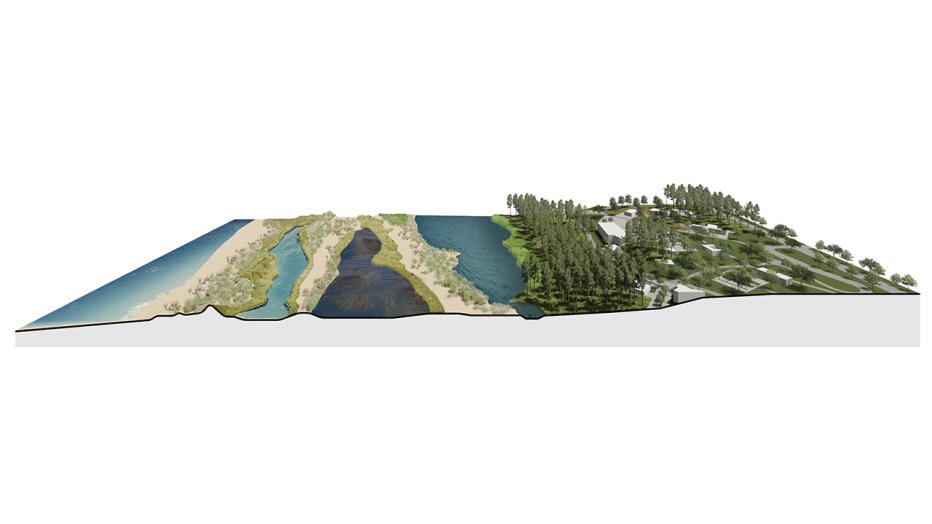
After being severely impacted by Category 5 Hurricane Michael in October 2018, Tyndall Air Force Base (AFB) has embarked on a rebuilding program that is focused on creating a resilient, sustainable and smart Installation of the Future that leverages innovative solutions in a “system of systems” approach to perform at the nexus of mission assurance, cost efficiency, and social and environmental sustainability.
A significant component of ensuring the future resilience of the base is addressing the risks that arise from coastal flooding and erosion. As part of the approach, our Tyndall AFB Rebuild Team is exploring a series of pilot projects that use nature-based solutions to reduce coastal flood risks while creating important social and environmental benefits.
Managing Coastal Flood Risks
Due to its coastal location, Tyndall AFB is vulnerable to extreme weather that can produce high winds, extensive rainfall, and storm surges from the Gulf of Mexico. Storm surges can generate high water levels capable of inundating low-lying parts of the base on both East Bay and the Gulf side. These risks are expected to increase over time as sea levels rise. There are a few strategies for managing coastal flood risk – making infrastructure resilient to flooding, moving infrastructure out of harm’s way, elevating structures so that they are not damaged, and building defenses to keep marine waters out.
Coastal defenses can take many forms; in most cases, these systems include traditional structures such as walls and levees, as well as a range of nature-based approaches such as beaches, dunes, and marshes. Nature-based solutions, many of which have been used for decades (such as beach renourishment), are particularly attractive because they can be less costly, be self-maintaining and offer a range of co-benefits associated with nature habitats (like habitat for threatened and endangered species, and recreational use). Nature-based solutions can be used alone or in combination with other approaches to provide multiple lines of defense against storms.
July 16, 2020 Webinar Hosted by the Society of American Military Engineers (SAME)
Tyndall AFB: Coastal Resilience in Support of Mission Assurance and Becoming the Installation of the Future
July 16, 2020 | 1:00 p.m. EDT |Register Here
Speaker: Joe Rozza, P.E., BCEE, Director of Strategic Sustainability, Jacobs
Coastal installations face a range of risks due to extreme weather, sea level rise and storm surge. This webinar will share the approach developed by Tyndall AFB to pursue coastal resilience using innovative planning, engineering and partnerships. This approach reconciles UFC requirements and the various climate change, resilience and adaptation directives into a coherent approach that supports mission assurance, cost effectiveness and pursuit of the goal of becoming a resilient, sustainable and smart Installation of the Future. A key focal point will include the "system of systems" approach that integrates grey, green, and natural infrastructure to increase resilience while creating locally relevant shared social, environmental and economic benefits.
Delivering Resilience
It’s time to think differently about the future — about how we prepare for and respond to natural, societal and economic risks. Jacobs delivers comprehensive infrastructure, technology and intelligence solutions to help governments, cities and private sector clients survive, recover, adapt and thrive regardless of the chronic stresses and acute shocks they experience.
Learn more about our global, cross-market solutions here: https://www.jacobs.com/insights/resiliency












































